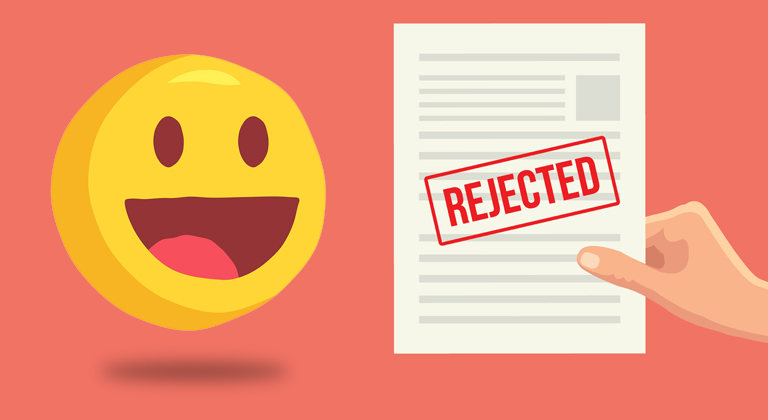Kindle Unlimited can still be worthwhile…
Kindle Unlimited is one of those programs you either love or hate: If you’re a reader you probably love it, and if you’re an author, you probably hate it. That’s because while readers pay one low monthly fee for an unlimited buffet of reading, participating authors are forced to sell their words for fractions of what they’d normally go for under the assumption that sheer volume will make up the difference. Unfortunately, the veracity of that assumption varies from author to author, which means the program definitely isn’t going to work for everyone. For those of you trying to figure it all out, Ginger is here to go through some of the reasons he decided to stick with KU, as well as some tips on squeezing as much value as possible out of it.
In October of last year, Isabel Jolie shared a case study about experiences of “going wide” or making books exclusive to Amazon as part of the Kindle Unlimited program. That question remains a hotly debated topic – with a lot of authors still agonizing about keeping their books on less profitable platforms, but not sure that the benefits of being part of Kindle Unlimited outweigh the requirement to remain exclusive to Amazon.
As somebody who primarily writes in the romance category, being part of Kindle Unlimited has never really been much of a choice for me. Over the course of the last 90 days, more than 66% of my revenue has come from Kindle Page reads, so it would take a lot to convince me that “going wide” would result in more income. That’s certainly not the case for all authors, though – your mileage will vary.
That being said, I don’t think it’s wise to overlook the impact Kindle Unlimited can have. Every month, Amazon sends authors an email informing them about the size of that month’s KDP Select Global Fund and while they don’t break down their numbers much beyond that, with a few assumptions and data gleaned from other sources and surveys, a more detailed breakdown can be achieved to help us figure things out. Written Word Media recently broke it down (as of the June 2021 numbers and their own survey of 2500 readers) so we’ll use their numbers. They calculated that there are approximately 3.3 million active KU readers that read an average of about 9 books a month (assuming a 300 page per book average). In June those readers read over 9 billion KU pages!
So, while the appeal of ‘going wide’ and hitting a broader audience on Apple books and Barnes & Noble is tempting, it’s worth remembering that you’re closing yourself off to millions of KU readers if you do. Self-published authors often don’t realize the size of this group when they’re making this decision, which is why they perhaps make ‘going wide’ seem like more of a no-brainer than it actually is.
In reality, Kindle Unlimited and its millions of subscribers are a much bigger deal than you might think – and as more authors experiment with going wide, it might be worth seeing if you can fill the space those authors leave with your own books.
To my mind, these are some things to consider about leveraging KDP Select:
- Readers who are part of Kindle Unlimited ‘buy’ books a lot more easily. One of the delights of being a Kindle Unlimited subscriber is that all the books in KU let you ‘Read for Free’ with a single click – so the major obstacle in turning a visitor to your book’s product page into a reader – them actually having to spend money on your book – is completely eliminated.
- KU subscribers read some genres avidly. It’s not a mystery why I stick with Kindle Unlimited. Romance is disproportionately represented among subscribers (as per the article linked above, approximately 35% of KU readers cite romance as their primary genre, which is still over 1 million of those total 3.3 million readers), and I have access to a ‘warm’ audience of new readers by keeping each of my new releases part of the program. Given that romance readers often easily read a book in a few days, this means I don’t need to ‘go wide’ to find my most valuable, engaged, paying customers.
- The KDP Price Promotions are incredibly effective free tools. Again, as a romance writer, it shouldn’t be that much of a surprise that I leverage the Free Promotion tool that is exclusive to books in KDP Select. This allows me to give my book away for free every 90 days, and in addition to being a great way to introduce new readers to my series, I’ll often find Kindle Unlimited Subscribers still click ‘Read for Free’ rather than ‘Buy for $0.00’ and so I’ll still end up getting paid for their page reads even though my book was technically for ‘free.’
That being said, if you are willing to flirt with the idea of keeping your books in Kindle Unlimited, here are some tips to help maximize the revenue you could potentially make:
- Include smart links in the backmatter of your books. One of the biggest game-changers for the number of page reads my romance books get came as a result of adding the first chapter of the next book in the backmatter of my novels. Backmatter can only make up 10% of your book’s length (to prevent ‘stuffers’ deceptively earning page reads) but if your first chapter is compelling enough, and you include a link to buy it directly, you’ll often find that one book in your series can help drive the page reads of all your subsequent books.
- Keep writing series titles. That tip becomes even more powerful when you write series of books. I’m up to book 12 in my MC Romance series, and I’ve found that advertising and promoting the first book and the most recent book are all I need to do in order to drive an uptick in all my KU page reads. Readers get invested in the lives of the characters you create, and therefore hungry to follow their adventures in subsequent books.
- Make use of your Price Promotion tools. Every 90 days, you can put your KU titles into a Kindle Countdown Deal or leverage a Free Book Promotion. Now, obviously these provide diminishing returns the more you use them, but they remain powerful tools in getting your books in front of new readers, and because they ‘cost’ you nothing to run, it’s worth making sure you take advantage of one of the promotional tools during every period in which your book remains part of KU. Otherwise, you’re wasting a huge opportunity.
It’s also worth remembering that your luck with Kindle Unlimited has a lot to do with the genre of books you write. For romance authors like myself, it’s a much easier decision. However, for non-fiction authors and those who write in other categories, the number of Kindle Unlimited readers might be more limited.
Finally, you shouldn’t be afraid to experiment when it comes to reaching these readers. The good thing about being part of KDP Select is that each period only lasts 90 days – so if you’re willing to go through the time and effort to upload your books to an alternative sales platform like Apple Books, you can chop-and-change between whether your books remain part of KU or not.
I’ve found a certain amount of success in making the first book in my MC Romance series available on other platforms for a limited period – but the problem is any sales I receive from those periods rarely translates into the carry-through page reads like I’ll get when the first book is in KU. Readers tend to exist in very tight ecosystems that don’t have a lot of crossover – even on Amazon itself. You have to think very strategically about the impact ‘going wide’ will have on your other books if you don’t expand their distribution too – because it’s difficult to nudge an Apple books reader to switch platform and buy the subsequent book in a series on Amazon instead.
But, then again, with an estimated 3.3 million subscribers to Kindle Unlimited, you also have to look at the number of page reads your KU books are getting and see just how deeply you’ve tapped that vein of potential readers. Sometimes, the lure of getting new readers by switching distribution channels overshadows the opportunity available for you to simply reach MORE KU readers.
For example, I’ve logged 31.9 million page reads for my MC series, which equates to 79,854 books read – but even if each of those individual books were read by different people, that means I’ve still reached less than 7% of KU’s estimated potential romance readers. There’s a massive audience out there still to reach, and given all the advantages KU offers in turning a potential reader into somebody who clicks ‘read for free’, it seems like a much smarter idea to chase the remaining 93% of readers than invest all the time and effort shopping my book on a completely different platform.
Ultimately, these are decisions you’ll have to make for yourself, depending on your genre and marketing plan. However, don’t dismiss the sheer size, scale, and potential KU offers to bring in royalties much more affordably (and with less overall effort) than you would do on ‘wide’ distribution platforms.











